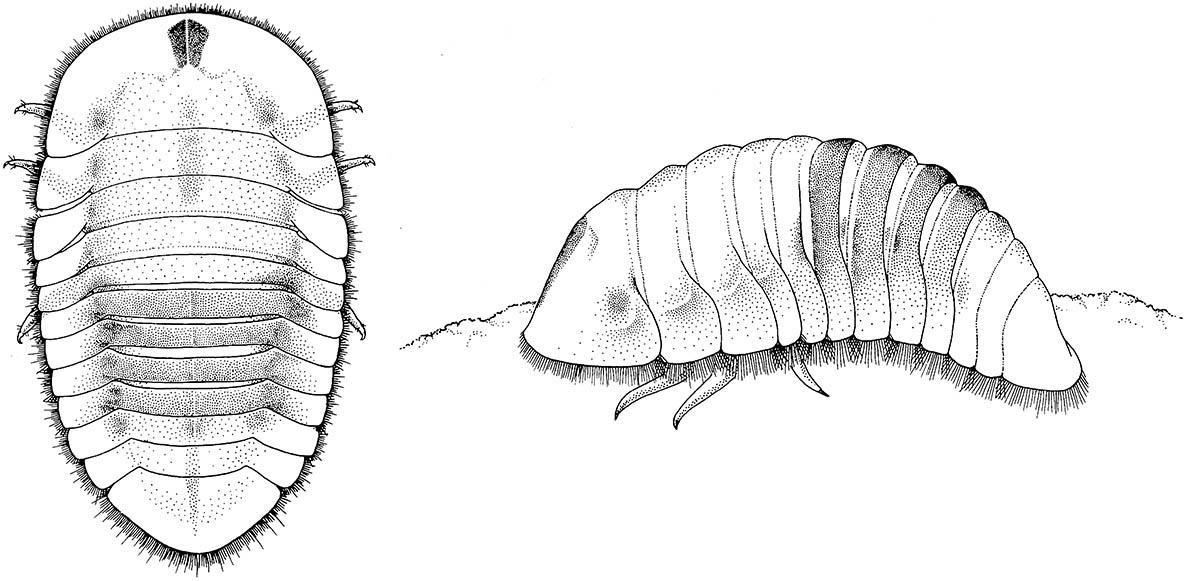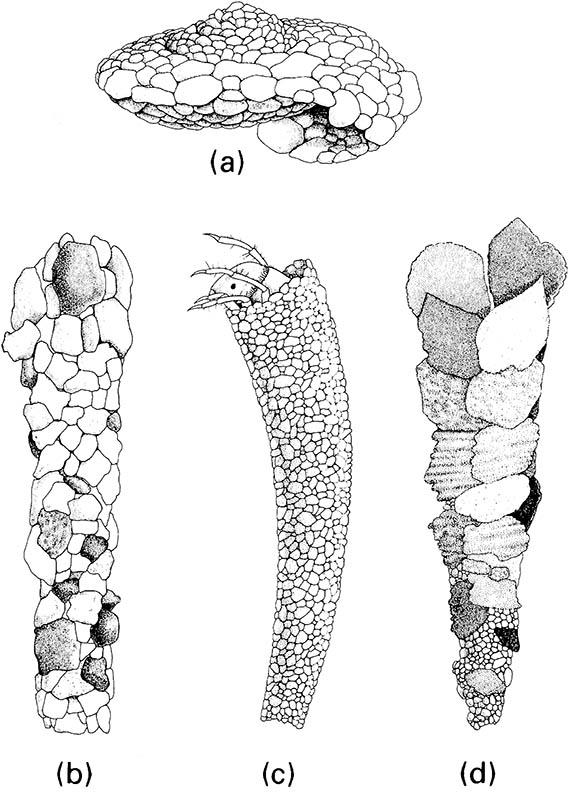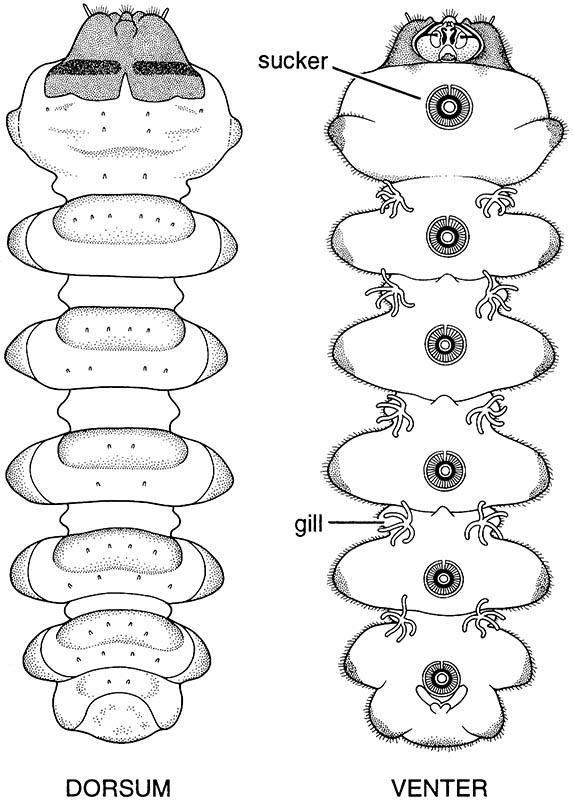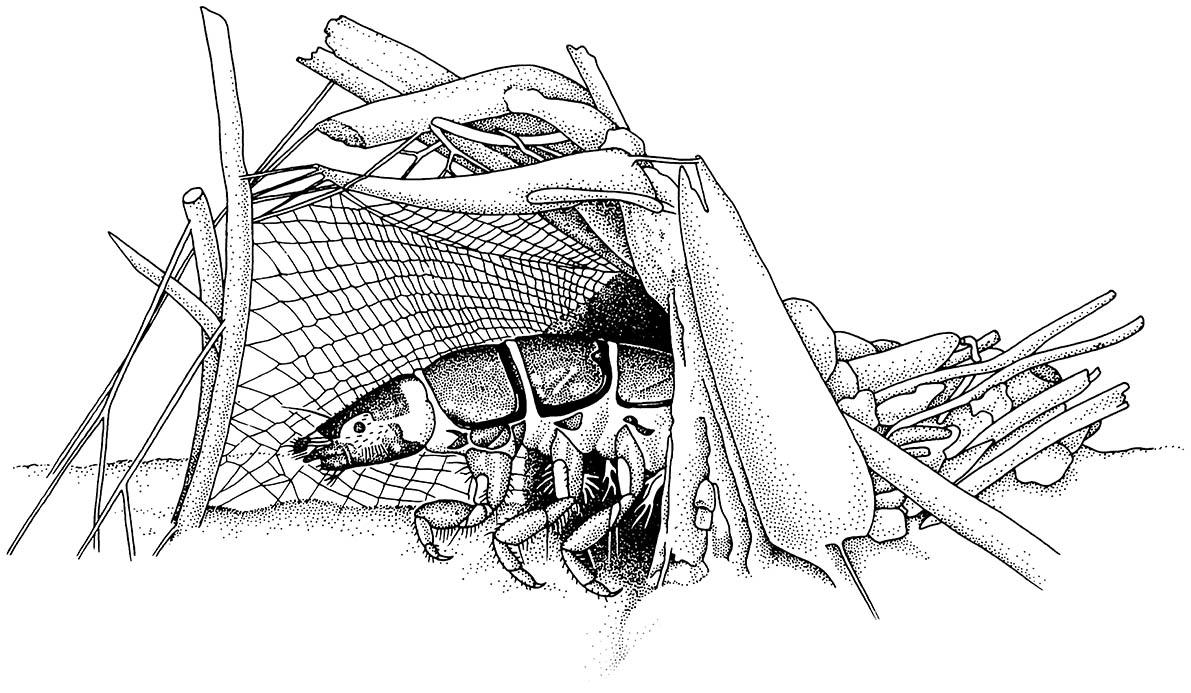10.4.1. Lotic adaptations
In lotic systems, the velocity of flowing water influences:
- substrate type, with boulders deposited in fast-flow and fine sediments in slow-flow areas;
- transport of particles, either as a food source for filter- feeders or, during peak flows, as scouring agents;
- maintenance of high levels of dissolved oxygen.
A stream or river contains heterogeneous micro-habitats, with riffles (shallower, stony, fast-flowing sections) interspersed with deeper natural pools. Areas of erosion of the banks alternate with areas where sediments are deposited, and there may be areas of unstable, shifting sandy substrates. The banks may have trees (a vegetated riparian zone) or be unstable, with mobile deposits that change with every flood. Typically, where there is riparian vegetation, there will be local accumulations of drifted allochthonous (external to the stream) material such as leaf packs and wood. In parts of the world where extensive pristine, forested catchments remain, the courses of streams often are periodically blocked by naturally fallen trees. Where the stream is open to light, and nutrient levels allow, autochthonous (produced within the stream) growth of plants and macroalgae (macrophytes) will occur. Aquatic flowering plants may be abundant, especially in chalk streams.
Characteristic insect faunas inhabit these various substrates, many with particular morphological modifications. Thus, those that live in strong currents (rheophilic species) tend to be dorsoventrally flattened (Fig. 10.5), sometimes with laterally projecting legs. This is not strictly an adaptation to strong currents, as such modification is found in many aquatic insects. Nevertheless, the shape and behavior minimizes or avoids exposure by allowing the insect to remain within a boundary layer of still water close to the surface of the substrate. However, the fine-scale hydraulic flow of natural waters is much more complex than once believed, and the relationship between body shape, streamlining, and current velocity is not simple.
The cases constructed by many rheophilic caddisflies assist in streamlining or otherwise modifying the effects of flow. The variety of shapes of the cases (Fig. 10.6) must act as ballast against displacement. Several aquatic larvae have suckers (Fig. 10.4) that allow the insect to stick to quite smooth exposed surfaces, such as rock-faces on waterfalls and cascades. Silk is widely produced, allowing maintenance of position in fast flow. Black-fly larvae (Simuliidae) (see the vignette to this chapter) attach their posterior claws to a silken pad that they spin on a rock surface. Others, including hydropsychid caddisflies (Fig. 10.7) and many chironomid midges, use silk in constructing retreats. Some spin silken mesh nets to trap food brought into proximity by the stream flow.
Many lotic insects are smaller than their counterparts in standing waters. Their size, together with flexible body design, allows them to live amongst the cracks and crevices of boulders, stones, and pebbles in the bed (benthos) of the stream, or even in unstable, sandy substrates. Another means of avoiding the current is to live in accumulations of leaves (leaf packs) or to mine in immersed wood — substrates that are used by many beetles and specialist dipterans, such as crane-fly larvae (Diptera: Tipulidae).
Two behavioral strategies are more evident in running waters than elsewhere. The first is the strategic use of the current to allow drift from an unsuitable location, with the possibility of finding a more suitable patch. Predatory aquatic insects frequently drift to locate aggregations of prey. Many other insects, such as stoneflies and mayflies, notably Baetis (Ephemeroptera: Baetidae), may show a diurnal periodic pattern of drift. “Catastrophic” drift is a behavioral response to physical disturbance, such as pollution or severe flow episodes. An alternative response, of burrowing deep into the substrate (the hyporheic zone), is a second particularly lotic behavior. In the hyporheic zone, the vagaries of flow regime, temperature, and perhaps predation can be avoided, although food and oxygen availability may be diminished.


(a) Helicopsychidae; (b) Philorheithridae; (c) and (d) Leptoceridae.


(After Wiggins 1978)

